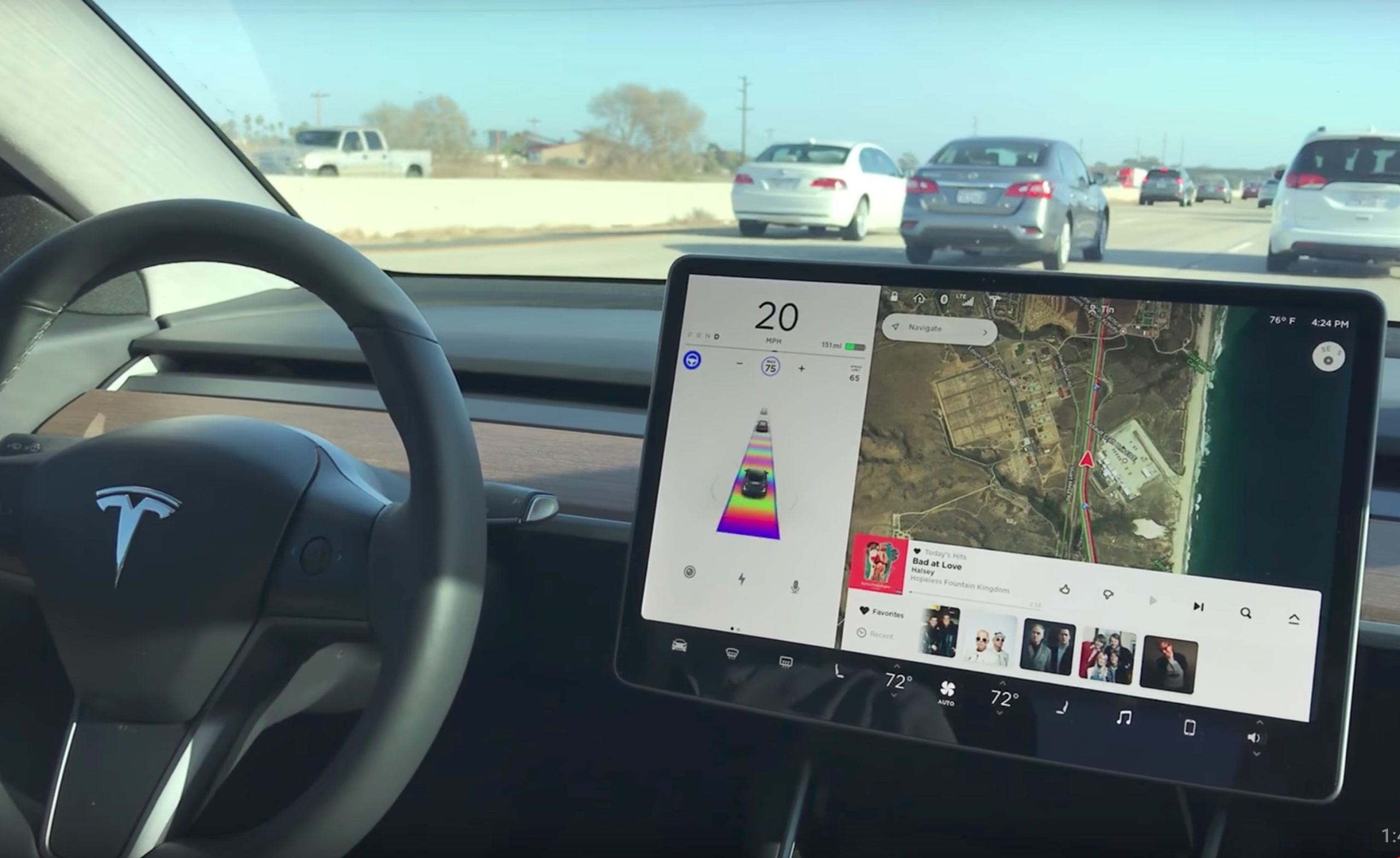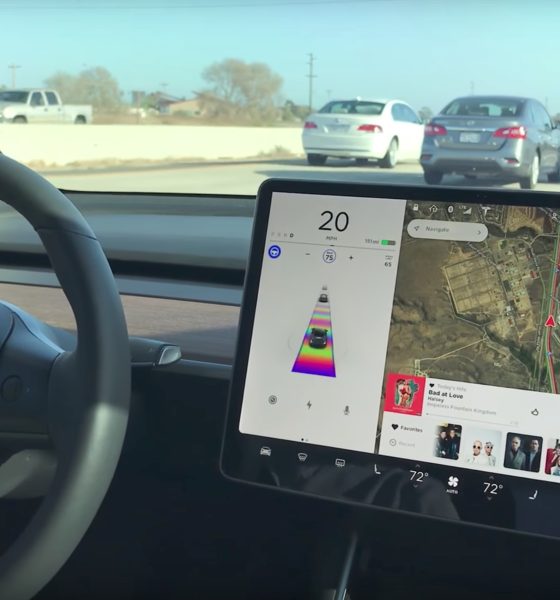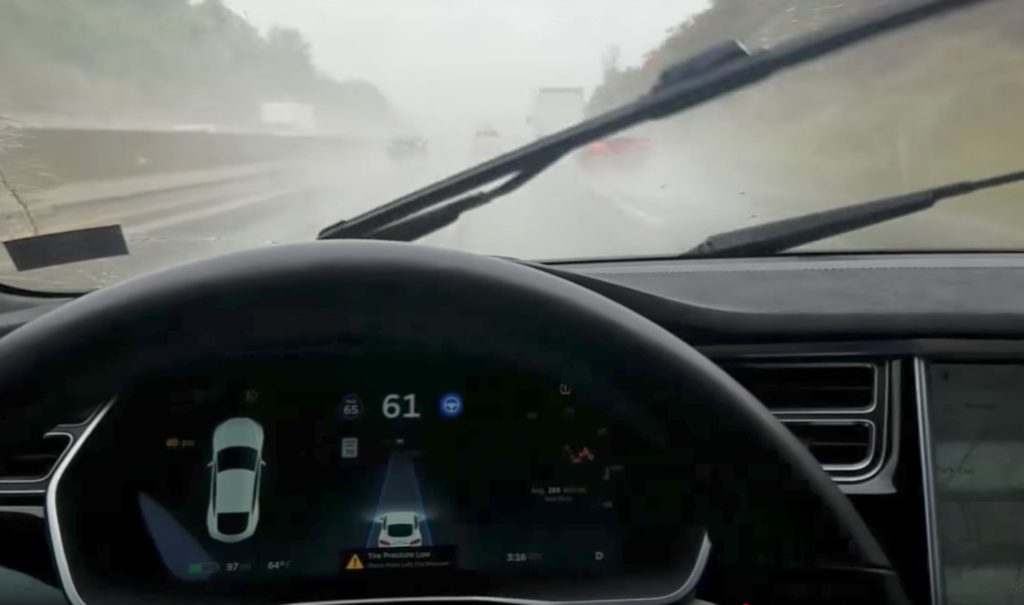

News
Elon Musk explains the delay for Tesla’s autonomous coast-to-coast trip
Elon Musk has finally explained why the company ultimately delayed its 2017 plan for a coast-to-coast autonomous drive, and why he stands firm on Tesla’s three-pronged Autopilot approach for full self-driving over LiDAR technology.
During the Q&A portion of Tesla’s Q4 earnings call, Romit Jitendra Shah of Nomura Instinet asked Musk for any updates on the company’s plans for a fully autonomous coast-to-coast drive. Responding to the inquiry, the Musk explained that Tesla is focused on developing a full self-driving suite that would work on all roads under any conditions — something that would have been compromised had Tesla forced the feat last year.
“We could have done the coast-to-coast drive, but it would have required too much specialized code to effectively game it or make it somewhat brittle and that it would work for one particular route, but not the general solution. So I think we would be able to repeat it, but if it’s just not any other route, which is not really a true solution,” Musk said.
When asked about the timeline for the coast-to-coast autonomous drive, the Tesla CEO stated that it might happen in three months, or “six months at the outside.” Musk further stated that the feature would be available for Model S, X, and 3 customers who purchased the Full Self-Driving (FSD) upgrade for their vehicles. The CEO did not confirm, however, if the feature would be rolled out to customers immediately after the coast-to-coast drive is accomplished, or if customers would have to wait before being able to access the feature.
Perhaps the most interesting part of Musk’s statements about FSD, however, came from David Tamberrino of Goldman Sachs. During the Q&A session, Tamberrino asked Musk about his comments on LiDAR technology, a particularly prominent feature of Tesla’s rivals in the self-driving field. Responding to the inquiry, Musk was firm in his stance that LiDAR is not needed for Tesla’s vehicles to achieve fully autonomous driving, even going so far as to state that rivals being dependent on the technology might be making a grave mistake.
“In my view, it is a crutch that will drive companies to a local maximum that they will find very difficult to get out of. They’re going to have a whole bunch of expensive equipment, most of which makes the car expensive, ugly and unnecessary. And I think they will find themselves at a competitive disadvantage,”
Musk further explained that utilizing sophisticated radar equipment is a far better option for FSD. Tesla is steadfast in using its three-pronged approach featuring redundant forward cameras, forward radar, and near-field ultrasonics will be key to the eventual mastery of autonomous driving.
Musk reaffirmed his stance on using this technology, as it allows vehicles to “see” through snow, rain, dust, and fog — conditions that even experienced drivers find difficult to drive on. Overall, Musk stated that he is optimistic about the development of Tesla’s autonomous driving suite. While Tesla’s CEO admitted that progress has been slow, he asserted that when the company achieves FSD, it would be something truly remarkable.
“It’s also one of those things that’s kind of exponential where it doesn’t seem like much progress, and suddenly, ‘wow.’ It will seem like well this is a lame driver. (Then,) like okay, that’s a pretty good driver. (Then,) like holy cow, this driver’s good,” Musk said.
It’s worth noting that Musk also stated that his beliefs in FSD, LiDAR, and radar technology might be proven wrong in the future. Musk did assert, however, that he is confident in his belief that Tesla’s non-LiDAR approach is the correct way to go.
Now perhaps I am wrong. In which case, I’ll look like a fool. But I am quite certain that I am not,” Musk said.
In a lot of ways, Musk’s statements about LiDAR and the delayed autonomous coast-to-coast drive makes perfect sense. As we noted in a previous report, Tesla’s focus on FSD technology is quite different than its competitors, in the way that the company is attempting to create a system that works under any conditions in any location. The leaders in the field, such as Waymo and GM, on the other hand, are pursuing something different, creating a system that works perfectly in a pre-programmed, set route.

News
Nvidia CEO Jensen Huang explains difference between Tesla FSD and Alpamayo
“Tesla’s FSD stack is completely world-class,” the Nvidia CEO said.

NVIDIA CEO Jensen Huang has offered high praise for Tesla’s Full Self-Driving (FSD) system during a Q&A at CES 2026, calling it “world-class” and “state-of-the-art” in design, training, and performance.
More importantly, he also shared some insights about the key differences between FSD and Nvidia’s recently announced Alpamayo system.
Jensen Huang’s praise for Tesla FSD
Nvidia made headlines at CES following its announcement of Alpamayo, which uses artificial intelligence to accelerate the development of autonomous driving solutions. Due to its focus on AI, many started speculating that Alpamayo would be a direct rival to FSD. This was somewhat addressed by Elon Musk, who predicted that “they will find that it’s easy to get to 99% and then super hard to solve the long tail of the distribution.”
During his Q&A, Nvidia CEO Jensen Huang was asked about the difference between FSD and Alpamayo. His response was extensive:
“Tesla’s FSD stack is completely world-class. They’ve been working on it for quite some time. It’s world-class not only in the number of miles it’s accumulated, but in the way it’s designed, the way they do training, data collection, curation, synthetic data generation, and all of their simulation technologies.
“Of course, the latest generation is end-to-end Full Self-Driving—meaning it’s one large model trained end to end. And so… Elon’s AD system is, in every way, 100% state-of-the-art. I’m really quite impressed by the technology. I have it, and I drive it in our house, and it works incredibly well,” the Nvidia CEO said.
Nvidia’s platform approach vs Tesla’s integration
Huang also stated that Nvidia’s Alpamayo system was built around a fundamentally different philosophy from Tesla’s. Rather than developing self-driving cars itself, Nvidia supplies the full autonomous technology stack for other companies to use.
“Nvidia doesn’t build self-driving cars. We build the full stack so others can,” Huang said, explaining that Nvidia provides separate systems for training, simulation, and in-vehicle computing, all supported by shared software.
He added that customers can adopt as much or as little of the platform as they need, noting that Nvidia works across the industry, including with Tesla on training systems and companies like Waymo, XPeng, and Nuro on vehicle computing.
“So our system is really quite pervasive because we’re a technology platform provider. That’s the primary difference. There’s no question in our mind that, of the billion cars on the road today, in another 10 years’ time, hundreds of millions of them will have great autonomous capability. This is likely one of the largest, fastest-growing technology industries over the next decade.”
He also emphasized Nvidia’s open approach, saying the company open-sources its models and helps partners train their own systems. “We’re not a self-driving car company. We’re enabling the autonomous industry,” Huang said.
Elon Musk
Elon Musk confirms xAI’s purchase of five 380 MW natural gas turbines
The deal, which was confirmed by Musk on X, highlights xAI’s effort to aggressively scale its operations.

xAI, Elon Musk’s artificial intelligence startup, has purchased five additional 380 MW natural gas turbines from South Korea’s Doosan Enerbility to power its growing supercomputer clusters.
The deal, which was confirmed by Musk on X, highlights xAI’s effort to aggressively scale its operations.
xAI’s turbine deal details
News of xAI’s new turbines was shared on social media platform X, with user @SemiAnalysis_ stating that the turbines were produced by South Korea’s Doosan Enerbility. As noted in an Asian Business Daily report, Doosan Enerbility announced last October that it signed a contract to supply two 380 MW gas turbines for a major U.S. tech company. Doosan later noted in December that it secured an order for three more 380 MW gas turbines.
As per the X user, the gas turbines would power an additional 600,000+ GB200 NVL72 equivalent size cluster. This should make xAI’s facilities among the largest in the world. In a reply, Elon Musk confirmed that xAI did purchase the turbines. “True,” Musk wrote in a post on X.
xAI’s ambitions
Recent reports have indicated that xAI closed an upsized $20 billion Series E funding round, exceeding the initial $15 billion target to fuel rapid infrastructure scaling and AI product development. The funding, as per the AI startup, “will accelerate our world-leading infrastructure buildout, enable the rapid development and deployment of transformative AI products.”
The company also teased the rollout of its upcoming frontier AI model. “Looking ahead, Grok 5 is currently in training, and we are focused on launching innovative new consumer and enterprise products that harness the power of Grok, Colossus, and 𝕏 to transform how we live, work, and play,” xAI wrote in a post on its website.
Elon Musk
Elon Musk’s xAI closes upsized $20B Series E funding round
xAI announced the investment round in a post on its official website.

xAI has closed an upsized $20 billion Series E funding round, exceeding the initial $15 billion target to fuel rapid infrastructure scaling and AI product development.
xAI announced the investment round in a post on its official website.
A $20 billion Series E round
As noted by the artificial intelligence startup in its post, the Series E funding round attracted a diverse group of investors, including Valor Equity Partners, Stepstone Group, Fidelity Management & Research Company, Qatar Investment Authority, MGX, and Baron Capital Group, among others.
Strategic partners NVIDIA and Cisco Investments also continued support for building the world’s largest GPU clusters.
As xAI stated, “This financing will accelerate our world-leading infrastructure buildout, enable the rapid development and deployment of transformative AI products reaching billions of users, and fuel groundbreaking research advancing xAI’s core mission: Understanding the Universe.”
xAI’s core mission
Th Series E funding builds on xAI’s previous rounds, powering Grok advancements and massive compute expansions like the Memphis supercluster. The upsized demand reflects growing recognition of xAI’s potential in frontier AI.
xAI also highlighted several of its breakthroughs in 2025, from the buildout of Colossus I and II, which ended with over 1 million H100 GPU equivalents, and the rollout of the Grok 4 Series, Grok Voice, and Grok Imagine, among others. The company also confirmed that work is already underway to train the flagship large language model’s next iteration, Grok 5.
“Looking ahead, Grok 5 is currently in training, and we are focused on launching innovative new consumer and enterprise products that harness the power of Grok, Colossus, and 𝕏 to transform how we live, work, and play,” xAI wrote.









